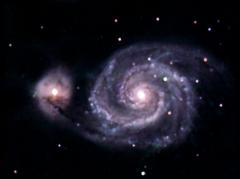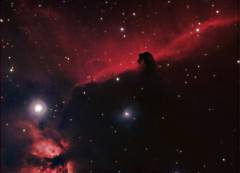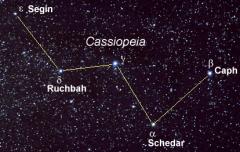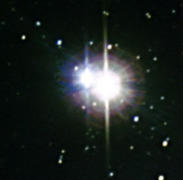
|
Galaxies Pictures of galaxies, like our own milky way, many thousands of light years distant, and containing billions of stars. |
| to top |
home |
|

|
Nebulae From the latin word for "cloud", there are many types of nebulae. Generally formed of gas, some are hot and glow of their own volition, some are cold and shine by reflected light. Some are formed of the ashes of dead or dying stars, whilst others are cradles where new stars are born. |
| to top |
home |
|

|
Star Clusters Star clusters come in two very different types: Open - in which the stars are clearly distinct, and Globular, which are tight ball-like formations containing thousands of stars, almost like a galaxy in miniature.
|
| to top |
home |
|

|
Constellations The ancients saw the brighter stars as forming figures of people, animals, and objects. Many of these constellations (and unofficial groupings known as Asterisms) are familiar patterns in the sky today.
|
| to top |
home |
|

|
The Milky Way Images showing our own galaxy, the Milky Way arcing across the sky. |
| to top |
home |
|

|
Multiple Stars At least half of all stars reveal themselves to be double or multiple star systems when examined through the telescope.
|
| to top |
home |
|
 |
|
All text and images copyright and may not be used without permission
|
|






